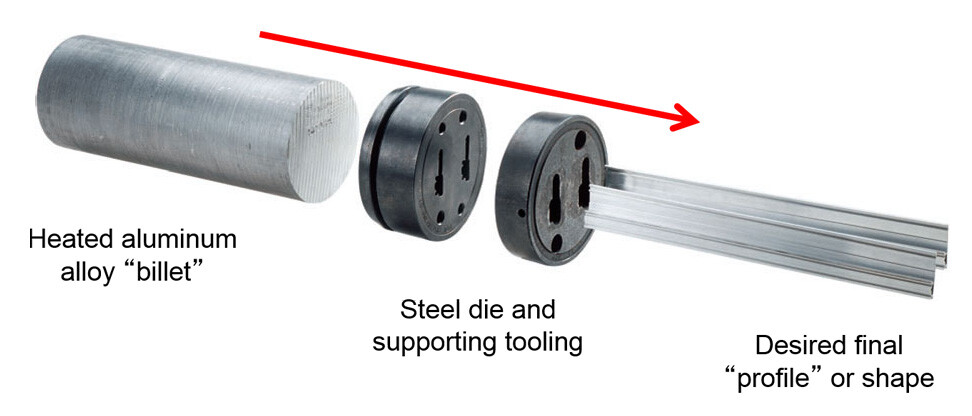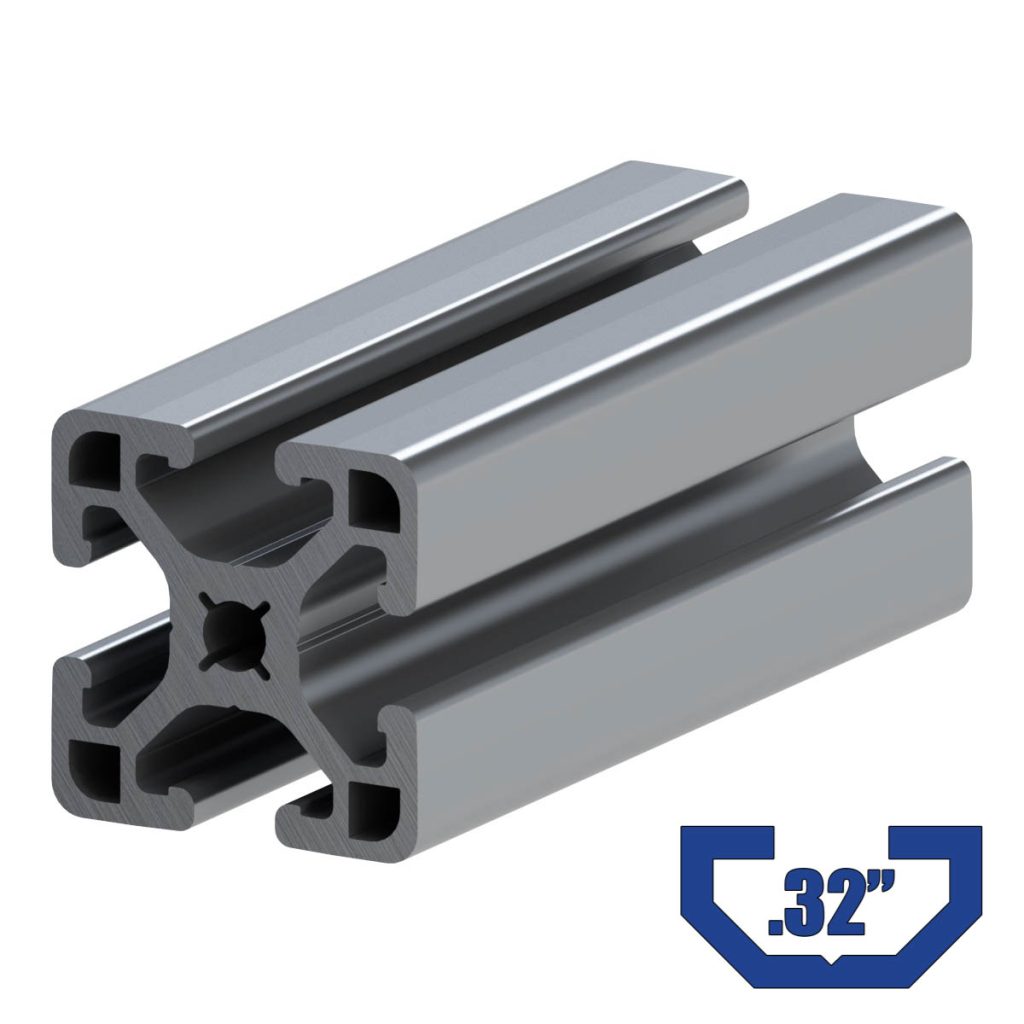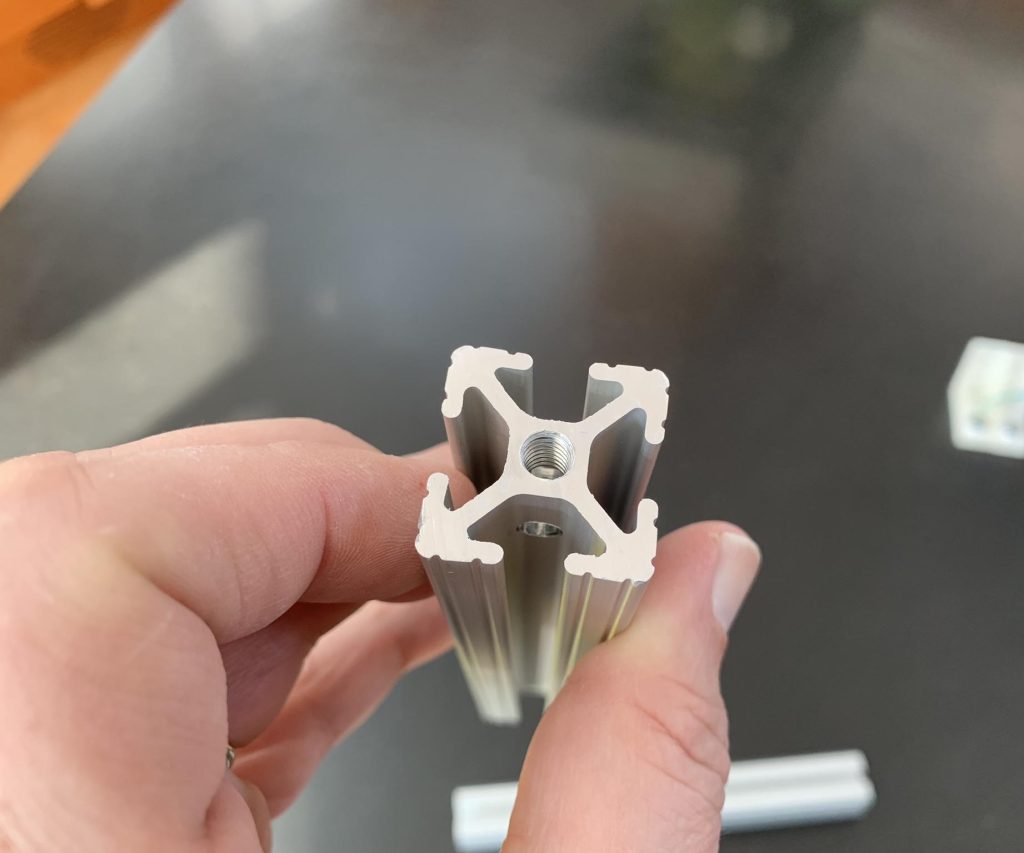Table of Contents
Aluminum extrusion is a manufacturing process that shapes aluminum into complex profiles with excellent strength and durability. This process is widely used in various industries, including construction, automotive, and aerospace.
In simple terms, the aluminum extrusion process involves heating the aluminum billet to a specific temperature and forcing it through a die to create the desired shape. The result is a versatile and cost-effective material that is lightweight, corrosion-resistant, and easy to fabricate. In this article, we will dive deeper into the aluminum extrusion process and explore its many uses and benefits.
Aluminum extrusion is a process of shaping aluminum material by forcing it to flow through a shaped opening in a die. This process is widely used in the manufacturing of frames, railings, and other similar products where lightweight and durable materials are required. The aluminum is heated and pushed through the die using a hydraulic press to produce the required shape. The resulting product is highly customizable and can be finished with a wide range of colors and textures.
What is Aluminum Extrusion Process?
Aluminum extrusion process is a manufacturing process that involves shaping aluminum alloys into a wide range of profiles or shapes. This process involves forcing heated aluminum through a die or mold to create the desired shape. The extrusion process produces a finished product with a uniform cross-section and consistent quality.
Process of Aluminum Extrusion
Aluminum extrusion process begins with the selection of the right aluminum alloy. The chosen alloy is then heated to the required temperature, which is usually between 400 and 500 degrees Celsius. At this temperature, the aluminum becomes malleable and can be shaped easily.
The heated aluminum is then loaded into a container and placed in front of the die. The die is a specially designed tool that has a specific shape and size. The heated aluminum is then forced through the die using a hydraulic press, which creates the desired shape.
The extruded aluminum is then cooled using a water bath or air cooling. Once cooled, the extruded aluminum is cut to the required length and finished according to the customer’s specifications.
Benefits of Aluminum Extrusion Process
Aluminum extrusion process offers several benefits over other manufacturing processes. Some of the significant benefits of this process are:
1. Versatility: Aluminum extrusion process can produce a wide range of shapes and sizes, making it a versatile manufacturing process.
2. Cost-effective: This process is cost-effective as it requires less tooling and less labor compared to other manufacturing processes.
3. High strength to weight ratio: Aluminum has a high strength to weight ratio, making it an ideal material for manufacturing lightweight products.
4. Corrosion resistance: Aluminum has excellent corrosion resistance properties, making it ideal for outdoor applications.
5. Sustainable: Aluminum is 100% recyclable, making it a sustainable and environmentally friendly option.
Aluminum Extrusion Vs Other Manufacturing Processes
Aluminum extrusion process has several advantages over other manufacturing processes like casting and forging. Some of the key differences are:
1. Casting: Casting involves pouring molten metal into a mold to create the desired shape. Casting is suitable for producing complex shapes, but it is not as precise as aluminum extrusion. Moreover, casting involves higher tooling costs, making it less cost-effective than extrusion.
2. Forging: Forging involves shaping metal by applying pressure using a hammer or press. Forging is suitable for producing high-strength parts, but it is not as versatile as aluminum extrusion. Moreover, forging involves higher tooling costs, making it less cost-effective than extrusion.
Applications of Aluminum Extrusion
Aluminum extrusion process is widely used in various industries due to its versatility and cost-effectiveness. Some of the significant applications of aluminum extrusion are:
1. Automotive: Aluminum extrusions are used in the manufacture of automotive parts like chassis, frames, and suspension systems.
2. Construction: Aluminum extrusions are used in the construction industry for making windows, doors, roofing, and curtain walls.
3. Aerospace: Aluminum extrusions are used in the aerospace industry for manufacturing aircraft parts like wings, fuselage, and landing gear.
4. Electrical: Aluminum extrusions are used in the electrical industry for making heat sinks, LED lighting, and power transmission components.
Conclusion
Aluminum extrusion process is a versatile and cost-effective manufacturing process that produces high-quality products with consistent quality. This process offers several benefits over other manufacturing processes like casting and forging, making it a popular choice in various industries. From automotive to aerospace, aluminum extrusions find wide applications due to their excellent strength to weight ratio, corrosion resistance, and sustainability.
Frequently Asked Questions
In this section, we will answer some of the most common questions about the aluminum extrusion process.
What is the aluminum extrusion process?
The aluminum extrusion process is a manufacturing process that involves shaping aluminum alloy material by forcing it through a die with a cross-sectional profile. The process is typically performed on a hydraulic press, and the extruded products can be used in a wide range of applications, from building and construction to transportation and electronics.
The process begins with a cylindrical billet of aluminum alloy material, which is heated to a specific temperature and then loaded into the press. The press applies pressure to the billet, forcing it through the die and shaping it into the desired profile. The resulting extrusion is then cooled and cut to the desired length.
What are the benefits of aluminum extrusion?
Aluminum extrusion offers several benefits over other manufacturing processes. One of the main advantages is its ability to produce complex shapes with a high degree of precision. Extruded aluminum products are also lightweight, strong, and resistant to corrosion, making them ideal for use in harsh environments. Additionally, the extrusion process is highly efficient and can produce large quantities of products quickly and cost-effectively.
Other benefits of aluminum extrusion include its versatility, as it can be used to create a wide range of profiles, and its sustainability, as aluminum is a fully recyclable material. Extruded aluminum products can also be finished with a variety of coatings and treatments to enhance their appearance and performance.
What industries use aluminum extrusions?
Aluminum extrusions are used in a wide range of industries, including construction, transportation, electronics, and consumer goods. In the construction industry, extruded aluminum products are used for window and door frames, curtain walls, and structural components. In the transportation industry, they are used for automotive and aerospace applications, such as engine components, chassis, and aircraft frames.
Extruded aluminum products are also used in the electronics industry for heat sinks, enclosures, and other components, as well as in the production of consumer goods such as furniture, lighting fixtures, and sporting goods.
What are the different types of aluminum extrusion?
There are several different types of aluminum extrusion, each with its own unique characteristics and applications. The most common type is solid extrusion, which involves the extrusion of a single solid piece of aluminum material through a die to create a specific shape.
Other types of aluminum extrusion include hollow extrusion, which creates a hollow profile by extruding material around a mandrel or core, and semi-hollow extrusion, which creates a partially hollow profile by extruding material around a partial mandrel.
What factors affect the cost of aluminum extrusion?
The cost of aluminum extrusion can vary depending on a variety of factors, including the size and complexity of the profile, the type of material used, and the quantity of products being produced. Other factors that can affect the cost include the level of finishing required, such as painting or anodizing, and the complexity of the die design.
Additionally, the cost of aluminum extrusion may be affected by market conditions, such as the availability and cost of raw materials and the level of competition in the industry. To ensure the most cost-effective extrusion process, it is important to work with a qualified and experienced extrusion supplier who can provide guidance and expertise throughout the process.
In conclusion, the aluminum extrusion process is a highly versatile and efficient manufacturing process that allows for the creation of complex and intricate shapes with ease. This process involves heating aluminum billets and forcing them through a die to create a desired shape. The finished product is then cooled and cut to the desired length.
Aluminum extrusion is used in a wide range of industries, including automotive, construction, and aerospace. Its lightweight, corrosion-resistant properties make it an ideal material for a variety of applications.
Overall, the aluminum extrusion process is an innovative and effective way to create high-quality aluminum products with precision and consistency. With its many advantages and practical uses, it is no wonder why this process has become an essential part of modern manufacturing.
Request a quote today!
[contact-form-7 id="1578" title="Contact form"]
Please compress the file into a ZIP or RAR file before uploading. Alternatively, send through your RFQ by email.
enquires@unitymanufacture.com





